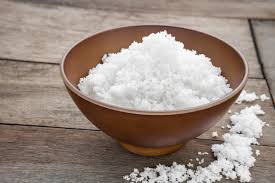Sodium Saccharin: A Time-Tested Artificial Sweetener for Modern Food Applications
Sodium saccharin is one of the oldest and most widely used artificial sweeteners in the world. Known for its intense sweetness and excellent stability, it has remained a staple in the food and beverage industry for over a century. As consumers and manufacturers continue to look for ways to reduce calories and sugar intake without compromising taste, sodium saccharin offers a reliable and cost-effective solution.
In this blog, we’ll explore what sodium saccharin is, its benefits, applications, and why it continues to play a vital role in sugar-reduced and sugar-free formulations.
What is Sodium Saccharin?
Sodium saccharin is the sodium salt of saccharin, a synthetic non-nutritive sweetener that is 300–500 times sweeter than sucrose (table sugar). It contains virtually no calories and is not metabolized by the body, making it ideal for diabetic and weight management products.
Discovered in 1879, sodium saccharin has stood the test of time due to its high sweetness potency, low cost, and exceptional heat and pH stability, making it suitable for processed foods, beverages, and pharmaceuticals.
Key Benefits of Sodium Saccharin
- Intense Sweetness at Low Usage Levels
- Its high sweetness potency allows for very low inclusion rates, reducing formulation costs.
Zero-Calorie
- Does not contribute any energy or carbohydrates to the diet, supporting calorie-reduction goals.
Stable in Heat and Acidic Conditions
- Retains sweetness in baking, cooking, pasteurization, and shelf-stable acidic beverages.
Long Shelf Life
- Chemically stable with excellent storage properties, making it ideal for large-scale manufacturing.
Cost-Effective
- Less expensive compared to many other high-intensity sweeteners, especially in bulk food processing.
Applications of Sodium Saccharin in the Food Industry
1. Beverages
- Used in diet sodas, flavored waters, and powdered drink mixes for sugar-free sweetness.
2. Baked Goods and Desserts
- Suitable for sugar-free cookies, pastries, and gelatin desserts due to its heat resistance.
3. Dairy Products
- Added to light yogurts and sugar-reduced ice creams for flavor balance without extra calories.
4. Confectionery
- Used in chewing gum, mints, and hard candies, often blended with other sweeteners to mask aftertaste.
5. Canned Fruits and Syrups
- Provides sweetness in low-sugar fruit preserves and syrups, especially in acidic environments.
6. Pharmaceutical and Personal Care
- Used in chewable tablets, toothpaste, and mouthwash for its sweetness and stability.
Conclusion
Sodium saccharin remains a powerful and practical tool for modern food formulators. Its unmatched sweetness, zero-calorie content, heat stability, and cost efficiency make it a top choice for manufacturers aiming to reduce sugar without compromising taste or product stability.
Whether you’re developing a diet beverage, low-calorie dessert, or functional food product, sodium saccharin can help you meet consumer demand for healthier, sugar-free options.
Interested in sourcing high-quality sodium saccharin or developing a custom sweetener blend? Contact ustoday for expert support and competitive pricing.







